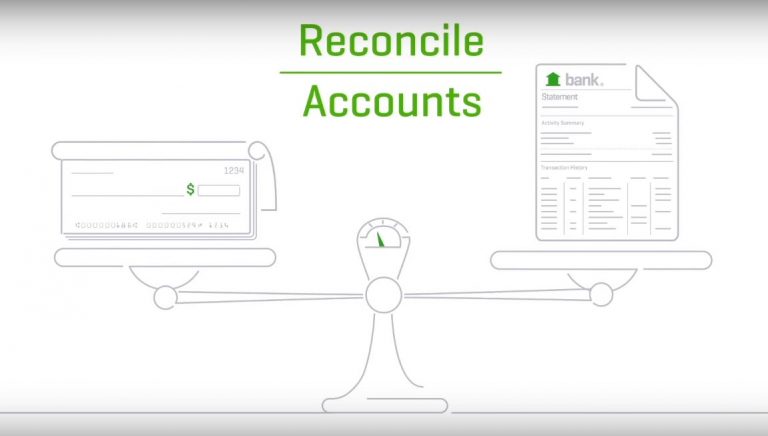Understand what is QuickBooks bank reconciliation and it’s benefits
Before you find out the need for QuickBooks Bank Reconciliation, it is very important to first understand what actually is Bank Reconciliation. Reconciling QuickBooks is basically an arrangement of matching the financial transactions present on the bank statements to what you have on your QuickBooks record. It should be noted that reconciling bank accounts with QuickBooks is an essential part for the business, as it can smoothly manage the momentous data. It’s important to understand the significance of the bank reconciliation with the help of cash flow analysis of the business.
The need for QuickBooks bank reconciliation might arise due to various possible reasons. In this article, we will discussing the need as well as other aspects associated with Bank Reconciliation via QuickBooks. So, the users can go through the article carefully, to understand the concept in a better way.
However, for more details, the user can also get in touch with our QuickBooks online support team via our toll-free number i.e. +1-888-510-9198.
Read Also: How to fix QuickBooks display issues?
What is QuickBooks Bank Reconciliation?
Undoubtedly, it is significant to reconcile business bank accounts on a monthly basis, in order to avoid any kind of inaccuracy. Reconciling the bank accounts on a regular basis ensures the user about the following points:
- This process allows the user to analyze the discrepancies between the records & the banks and ensure that they are fixed in an apt manner.
- Well-timed notification of any fraudulent transactions that may occur is another benefit of reconciliation.
It is highly recommended by the experts that the users should reconcile the bank/credit card accounts in QuickBooks on a regular basis to ensure that the results are accurate.
Significant Notes for QuickBooks Bank Reconciliation
Before the user begins with the reconciliation process, make certain to have:
- In case the beginning in the start Reconciliation window doesn’t match the beginning balance in your bank or debit card statement, then the user shouldn’t wage bank Reconciliation in QuickBooks.
- Also, the user needs to ensure having backed up your QuickBooks company file.
- Setting up the bank or credit card account in QuickBooks with the correct beginning balance is also an essential factor.
- The user should not edit any type of transaction that has been currently resolved. As it will certainly trigger a discrepancy in the account and the user will end up in different beginning balance.
- Another factor that the user should ensure is to receive a duplicate of the bank or credit card statement.
- One of the best methods is to always reconcile the account as he/she receives his/her bank or credit card statement to ensure that the QuickBooks account is always in balance with the paper statement.
- Lastly, the user is required to ensure that he/she has entered all un-cleared transactions for the statement period.

Related Article: How to undo or delete reconciliation in QuickBooks?
Significance of QuickBooks Reconciliation with Bank Account
Basically, the Bank Reconciliation is a financial accounting technique that uses two sets of records to make certain that there are authentic figures in concurrence. Reconciling bank accounts with QuickBooks can be used to conclude whether the funds move an account event & the total sum spent. The user is supposed to make secure the two values equalized at the end of the recording period.
Reconciling a bank or credit card declaration evidently implies to observe in contrast the accounting records, accounts receivable, and accounts payable & identical them up to the equivalent transaction as recorded on the bank statement. At the end of each financial month & quarter, it’s a fine idea to reconcile an account. When reconciling an account, businesses, and singular person prove that each transaction sums to the correct ending account balance.
- The very first benefit of QuickBooks Reconciliation with Bank account is that the entire financial transactions and bank statements get recorded in QuickBooks software.
- Also the entire reconciled transactions are marked as cleared in the QuickBooks.
- This makes the user competent to run the bank reconciliation reports that will endow the information of the items that have cleared the bank & those that remain outstanding (uncleared).
- The financial report such as balance sheet and profit & loss statements and balance sheet is advanced.
- The entire reconciled financial transactions are apparent in QuickBooks as emptied.
- The user is able to run the bank reconciliation address that will provide the information of the items that have emptied the bank & those that stay exceptional.
- All transactions of the bank statement get listed in QuickBooks.
Before the user pursue the steps to reconcile QuickBooks with bank account, it is important to ensure to have the bank statement available for the bank account to be reconciled.
- The user is required to arrange the bank or credit card account in QuickBooks with the accurate beginning balance.
- Also, back up the QuickBooks company file.
- A pencil for designating the selected items on your statement may also be nearby. Taken a copy of your bank or credit card statement.
- Filed all uncleared transactions for the statement period.
See Also: How to Fix QuickBooks Error 6000?
Steps to Reconcile your accounts in QuickBooks
This video will assist the user to Reconcile the accounts in QuickBooks,
Facts associated with QuickBooks Reconciliation with Bank Account
It is significant to reconcile the bank account as an everyday review of the bank accounts can assist the user in identifying problems before it become a brain teasing hassle. This is mainly important for businesses, accounts, & individuals to inspect wrong activity and to continuing financial statement errors.
Catch Hoax:
One of the major things to look for is any sort of indication of hoax.
- Were reliable analyses that the trouble creates a replica or alteration, leading to more money leaving the analysis account?
- Were checks troubles without permission?
- Are there unapproved transfers out of the bank account, or has anyone made unapproved withdrawals?
Pay Employees:
- QuickBooks has time-tracking and integrated payroll features. Employees log their hours, the employer can assess as well as approve them, whereas QuickBooks does the rest.
- With the help of QuickBooks the user can Cut the checks or pay staff members by means of direct deposit, issue W2s at tax time, as well as file taxes online.
Avoid Troubles:
Reconciling the bank account also facilitates the users to recognize issues that might entail attention. For instance, the user might probably desire to re-examine how he/she handles or manage the cash flow & accounts receivable, or possibly wish to modify the activity performed by someone that has been recorded in the system or the accounting processes the user generally applies.
- The user must know the availability in accounts.
- Stop bank charge for not sufficient funds or going into lines of credit when the user doesn’t really want to.
- Refrain from bouncing analysis or failed computerized payments to coworkers & suppliers.
- Familiarize with the bounced or unsuccessful customer payments and also if any action required.
- Track the outstanding checks.
- Ensure that entirety is going into the accounting system appropriately.
- Enable the user to see the bank errors.
Receive Payments:
- The user can easily accept payments with QuickBooks. Simply giving the customers an option to pay through credit card, debit card, PayPal, or bank transfer, will work in this case.
- QuickBooks refines the repayment and also transfers the money directly to the bank account.
- The user can swipe or dip the card from the phone or tablet if there is even a mobile card reader.
Reconciliation Time:
It’s logical to analyze the bank accounts at least every month. For high-volume businesses or positions where hoax is jeopardy, more often is better. Some businesses reconcile their bank accounts every day.
The user can also build care into the bank accounts – ask the bank for ideas. One of such solution is – Positive Pay, which various banks propose, continuing the bank from accept payments unless the user has beforehand notified them about the payment.
If the Accounts don’t get reconcile:
At times, it is might be happen that the user might not be able to reconcile the bank accounts. No need to be anxious if the difference among the two statements is tiny. As most of the reconciliation module authorize to label it as an error. Most possibly, the user will be capable to resolve the missing transaction during next month’s reconciliation.
Conclusion
This brings us to the end of the article, where we hope that the information stated in the article might help the user to understand the QuickBooks Reconciliation in a better manner. For further information or assistance for any issue associated with QuickBooks – directly make a call to our QuickBooks Enterprise support team by dialing toll-free +1-888-510-9198. Our experts will be more happy to help you.
People also searched for:
How to resolve QuickBooks error code 1335?
How to Fix QuickBooks Install Error Code 1722?
Steps to improve QuickBooks desktop performance
Some FAQs Related to QuickBooks Bank Reconciliation
Bank reconciliation is the process of matching the transactions in your bank statement with those in your QuickBooks account. QuickBooks bank reconciliation ensures that your accounting records match your bank statement, which helps you identify discrepancies, prevent overdrafts, and maintain accurate financial records.
To reconcile your bank account in QuickBooks, first, navigate to the Banking menu and select the account you want to reconcile. Then, click the Gear icon and select “Reconcile.” Follow the prompts to enter the statement date, ending balance, and any service charges or interest earned. Next, compare the transactions on your bank statement with those in QuickBooks and mark them as cleared. Once all transactions match, click “Finish Now” to complete the reconciliation.
If your bank reconciliation in QuickBooks doesn’t balance, you may have missed a transaction or entered an incorrect amount. Double-check your entries and compare them to your bank statement. You can also try reconciling again from the beginning or reaching out to QuickBooks support at +1-888-510-9198 for assistance.
Yes, QuickBooks allows you to reconcile multiple bank accounts at once. Simply select each account you want to reconcile from the Banking menu and follow the same steps as you would for a single account.
It’s best to reconcile your bank accounts in QuickBooks at least once a month to ensure accuracy and catch any discrepancies early. However, the frequency may depend on the volume of transactions and the size of your business. For more information on the ideal reconciliation schedule for your business, call our toll-free number +1-888-510-9198 to speak with a QuickBooks expert.


